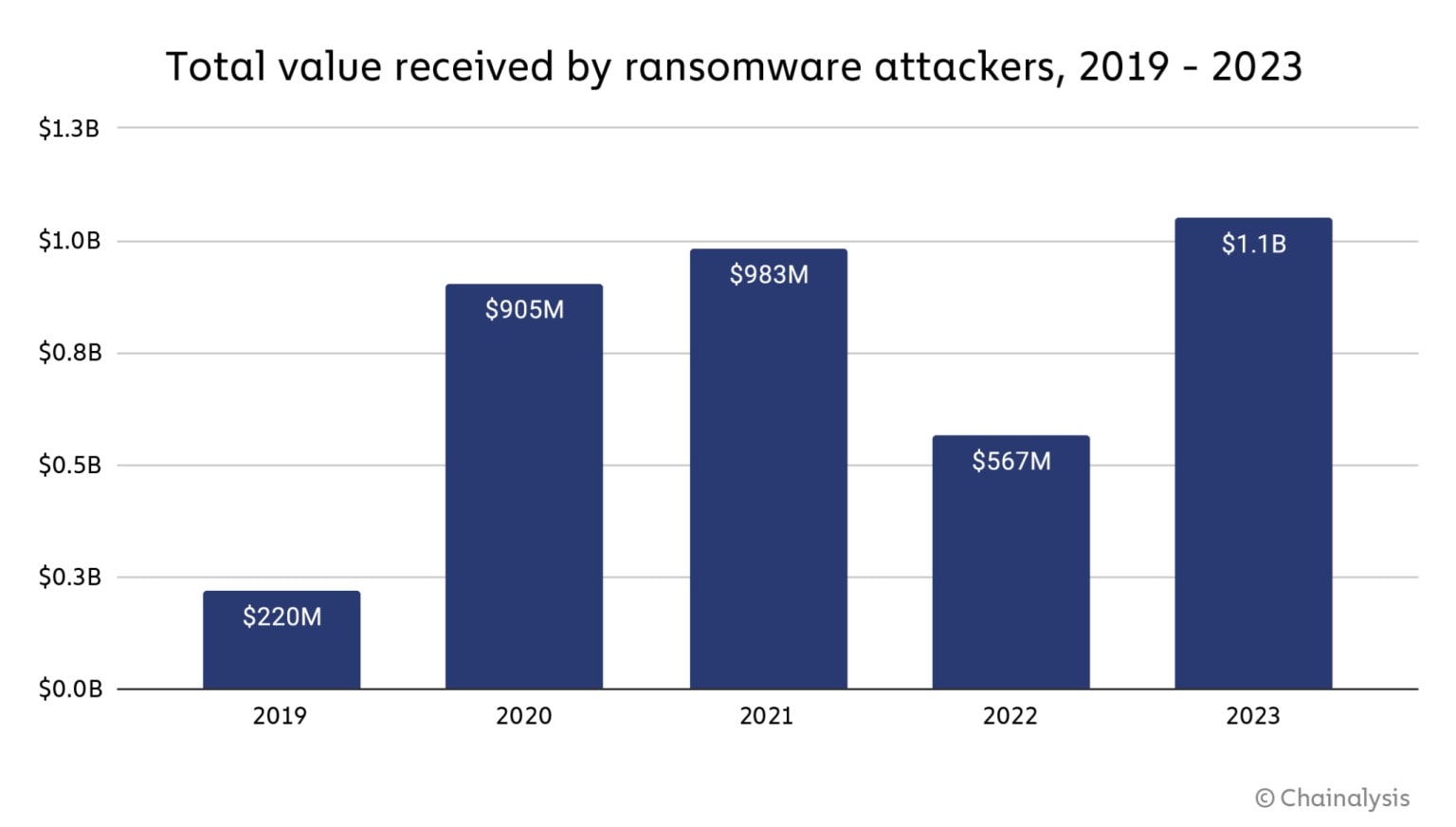Note: This is a guest post written by Jeeva Shanmugam. You can reach him on Instagram, X, or email –In a year defined by extraordinary cyber risks, 2023 witnessed a scary comeback of ransomware attacks, with victims collectively paying more than $1.1 billion to recover access to their encrypted data. This staggering sum marks a nearly doubling of the previous year’s 567 million reimbursements, raising alarms across businesses already dealing with rising cybersecurity issues. Check out the details.
Ransomware Payments Hit Record $1.1 Billion in 2023
The rise in ransomware payments is followed by a disturbing shift in tactics, as criminals increasingly target key infrastructure, causing hospitals, schools, and government organizations to collapse as they attempt to recover from disruptive attacks.
Unlike the largely quiet scene of 2022, ransomware perpetrators in 2023 showed renewed vigor, expanding their operations and focusing on vulnerable businesses with critical infrastructure. Hospitals took the brunt of these attacks, with 46 hospital systems in the United States alone being targeted, a dramatic contrast to the 27 recorded in 2021. The consequences were severe, with healthcare services halted and people’s lives hanging in the balance.

Image Credits: Chainalysis
However, modern ransomware attacks go beyond only data encryption. Many attackers increasingly use devious strategies like as “double extortion,” in which critical data is stolen before encryption, essentially holding firms hostage and threatening public exposure if the ransom is not paid. This coercive tactic not only increases the strain on victims but also reduces the efficacy of traditional backup systems, compelling organizations to consider compliance with ransom demands.
Furthermore, the introduction of “big game hunting” represents a move toward painstakingly planned and targeted attacks against huge enterprises with few options for recovery. Such calculated attacks highlight the increasing sophistication of ransomware operations, providing tremendous challenges to cybersecurity specialists charged with protecting digital infrastructures.
However, despite the havoc caused by these heinous crimes, a disturbing reality emerges: the cash windfall garnered by ransomware gangs serves as a stimulant for the spread of even more dangerous threats. With billions of cash at their disposal, these evil enterprises invest in advanced infrastructure and hire experienced coders, fueling a vicious cycle of cybercrime escalation.
Looking ahead, experts warn that ransomware attacks are not only here to stay, but will become much more sophisticated and targeted in the future. To manage risks and strengthen defenses against this changing threat landscape, companies should prioritize proactive actions. These include establishing strong backup systems, providing extensive security awareness training, deploying advanced endpoint protection solutions, and developing rigorous incident response strategies.
Overall, while the struggle against ransomware continues, getting ahead of emerging threats and implementing proactive security measures are critical. Organizations may strengthen their security and withstand the ever-present threat of cyber extortion by arming themselves with knowledge and resilience.






